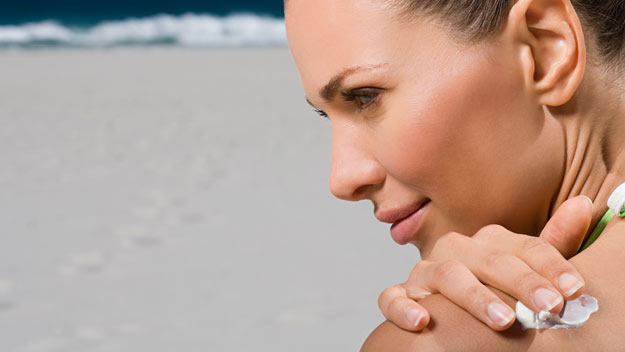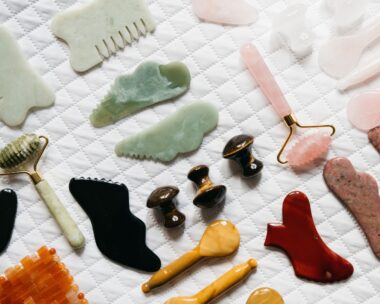We’re constantly reminded about the perils of the sun. Although crops wouldn’t grow, solar panels would be wasted and vitamin D in our skin would be deficient without it, the sun is often given a bad wrap.
Yet when we look at the irreversible damage it causes to our skin, we do need to make sure we protect ourselves from it at all times (and leave the solar panels to soak it up, not our skin).
What is sunburn?
The redness of the skin, what we call sunburn, is caused by surface blood vessels of the skin starting to dilate (similar to cheeks being made red by pinching) as a reaction to the UV radiation of the sun (specifically UVB rays). No doubt, your next question is, “What is the difference between UVA and UVB radiation?” UVA rays are the ageing rays and UVB the burning rays, and both are harmful to the skin.
The dark side of tanning
Gone are the days of the tan as a status symbol of the West (in the Middle East, India and many parts of Asia it is the opposite, with white skin symbolising a higher social status). These days, we are all on the hunt for products and services that will give us flawless, youthful skin.
One way to achieve this is to protect your skin every day by using a broad spectrum sunblock cream. Remember, though, that the sun doesn’t only affect you while on holidays/in a swimsuit/playing outdoors, so make sure you have a defence against it each time you leave the house. UVA rays (“A” for ageing) are also strong enough to penetrate glass, so don’t think that your skin is protected by the windscreen when you’re on a lovely Sunday drive.
What does SPF mean?
We all know what it stands for – sun protection factor – but what does the number represent? Basically, if your skin can withstand 10 minutes in the sun without burning, then with an SPF15, for instance, your skin will last 15 times that – 150 minutes – in the sun before burning. With SPF30, it will last 30 times that – 300 minutes. However, this is only a guide because everyone’s skin reacts differently and the best choice is to wear sunblock whenever you go outside – and reapply it!
SPF30+ will filter out 97 per cent of the sun’s UV radiation, but in reality, it might be much less than this because we often do not apply sun cream correctly. The Cancer Institute of NSW recommends, as a guide, using a teaspoon-sized amount of sun cream on each arm, leg, front of body and back of body. The average adult needs around 7 teaspoons of sun cream to protect their whole body.
The best advice is to stay covered up. With so many cute caftans available, there is no reason you can’t cover up and look fabulous at the same time.
**Sun=1, You=0
** Even the best of us stumble and fall at the altar of the sun every now and then (hopefully not often) and end up with a bit of sunburn (perhaps you missed a spot with the sun cream or the water was just so nice that you forgot to get out and reapply).
The first thing to do if you are sunburned is to cool down by running a cool or cold bath or shower, to take the initial sting out of the burn, and drink lots of water. Next is to get some anti-oxidants onto your skin as soon as you can, such as a body lotion with vitamins A, E and C in it, spread liberally over your body. The anti-oxidants help resist the free radicals in your skin that have been awakened by too much exposure to sunlight.
The damage the free radicals are causing continues for up to 72 hours, so keep your skin well covered with anti-oxidants for as much of that time as possible.
Once the initial burn has started to go down, you can follow up with sun damage repair products (gels or sprays usually). Also take some vitamin C and E supplements to help your body keep up the fight against free radicals.
Fake it…
The best way to achieve the “I’ve just returned from summering on the Continent” sun-kissed look is artificially. There are so many fake tan products on the market that we’ve barely scratched the surface, but we’ve put together a few of our favourites. One thing to remember with fake tanning is skin preparation – it is essential. Otherwise, all the time you spend gloved up in front of the mirror, bending into awkward positions, will be wasted when your elbows and knees turn a bright white (because you didn’t exfoliate first).
Make-up
A full face of make-up at the beach is about as natural as nylon – not a good look. Let your skin breathe on the beach by cutting make-up down to the bare essentials – waterproof mascara and an SPF30+ tinted moisturiser for your face and body. The debate around tinted moisturiser is as old as the hills. Some swear by it, while others argue it is neither a good moisturiser nor a good foundation. Yet it is a safe way to keep some colour on your face while you’re hitting the waves or paddling in the pool.
Lip smacking
Don’t forget your lips. Lips don’t tan, but they sure do burn. Make sure to reapply lip balm with SPF as often as you can. Each time you take a sip of water or get dumped by a wave (and get a mouthful of water), your lip balm gets washed off. So, when you reapply your sunblock, pop your lip balm on again.



.jpg)
